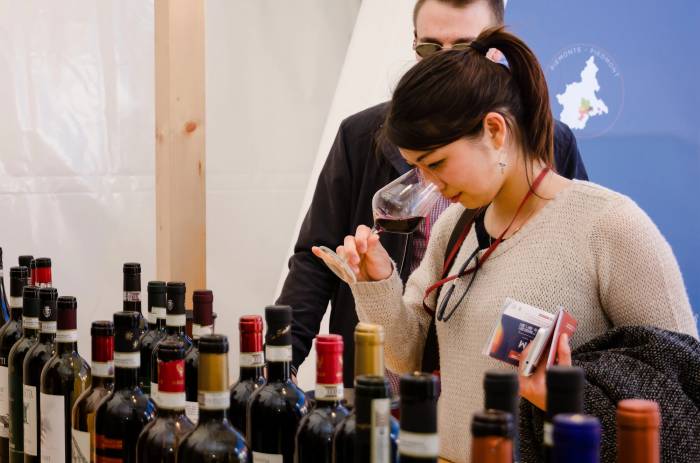U.S. Wine Consumption Drops to Lowest Level Since 1961 Amid Shifting Tastes and Industry Turmoil
Producers face oversupply, changing social habits, and competition from cannabis as experts debate how to revive wine’s appeal
2025-11-18

The American wine industry is facing a period of significant uncertainty and change. In recent years, a series of challenges have converged to create what many see as a crisis for producers, retailers, and consumers alike. Tariffs imposed on imported goods, including wine, have disrupted trade and created confusion in the market. Health authorities, such as the World Health Organization, have issued warnings about alcohol consumption, further dampening public enthusiasm. According to the International Organization of Vine and Wine, U.S. wine consumption in 2023 fell to its lowest level since 1961.
These issues are compounded by new competition from cannabis products and non-alcoholic beverages, as well as changing social habits among younger generations who are less likely to gather in person or drink alcohol regularly. The rise of GLP-1 drugs, which suppress appetite and interest in drinking, has also played a role. As a result, grape growers are facing oversupply problems, with some leaving fruit unharvested or even removing vineyards altogether.
Despite these headwinds, many in the industry believe that wine’s cyclical nature means recovery is possible. However, there is growing concern that the current combination of factors represents a more fundamental shift in American drinking culture.
Industry professionals are divided on how best to respond. Some argue that wine needs to become more accessible and fun for consumers. Jon Bonné, an author and editor specializing in wine, says that the industry has become too self-serious and needs to recapture a sense of enjoyment. He points to the success of casual wine bars popular with younger drinkers as evidence that people still want to enjoy wine in relaxed settings.
Others see opportunity in technological and demographic shifts. Dan Petroski, a winemaker in Napa Valley, notes that the growth of the tech sector has historically brought new wealth and visitors to California’s wine regions. He believes that the next wave of innovation from Silicon Valley could help revitalize interest in wine among younger consumers.
Shannon Saulsbury, who manages beverage programs for a restaurant group, argues that wine is underrepresented in popular culture and media. She suggests that more visibility for wine in television shows and social media could help make it more appealing to Gen Z and millennials. Saulsbury also calls for a more positive outlook within the industry itself, encouraging professionals to focus on rallying support rather than dwelling on negative trends.
For Audra Chapman, who works both as a winery proprietor and marketing manager, the key is building authentic connections between producers and consumers. She believes that sharing stories about the people behind each bottle can foster loyalty and engagement.
Regulatory reform is another area where some see potential for improvement. Tom Wark, executive director of the National Association of Wine Retailers, advocates for changes to America’s three-tier distribution system. He argues that allowing direct sales between producers and retailers—and easing restrictions on interstate shipping—would give consumers better access to diverse wines while enabling more creative marketing.
Daniel Johnnes, a prominent sommelier and event organizer, emphasizes the importance of hospitality and experimentation. He encourages both professionals and consumers to break away from trends and trust their own tastes.
Marie Cheslik, an author and founder of Slik Wines, urges professionals to meet consumers where they are—even if that means embracing mass-market brands like Barefoot Moscato. She sees these entry-level wines as opportunities to introduce new drinkers to the broader world of wine.
Pascaline Lepeltier, beverage director at Chambers restaurant in New York City, stresses the importance of good service over new ideas. She believes that listening carefully to customers’ preferences and budgets is essential for creating memorable experiences.
Dr. Liz Thach, president of the Wine Market Council, points out that research consistently shows wine is still associated with special occasions but lacks relevance for everyday life among many Americans. She suggests that developing new products—such as portable canned wines with sophisticated flavors—could help bring wine back into mainstream social settings.
The American wine industry is at a crossroads. While some see reasons for optimism based on past cycles of decline and recovery, others warn that deeper cultural changes may require new approaches. Whether through regulatory reform, better storytelling, increased visibility in media, or product innovation aimed at younger drinkers, many agree that adaptation will be necessary if wine is to maintain its place in American life.
Founded in 2007, Vinetur® is a registered trademark of VGSC S.L. with a long history in the wine industry.
VGSC, S.L. with VAT number B70255591 is a spanish company legally registered in the Commercial Register of the city of Santiago de Compostela, with registration number: Bulletin 181, Reference 356049 in Volume 13, Page 107, Section 6, Sheet 45028, Entry 2.
Email: [email protected]
Headquarters and offices located in Vilagarcia de Arousa, Spain.